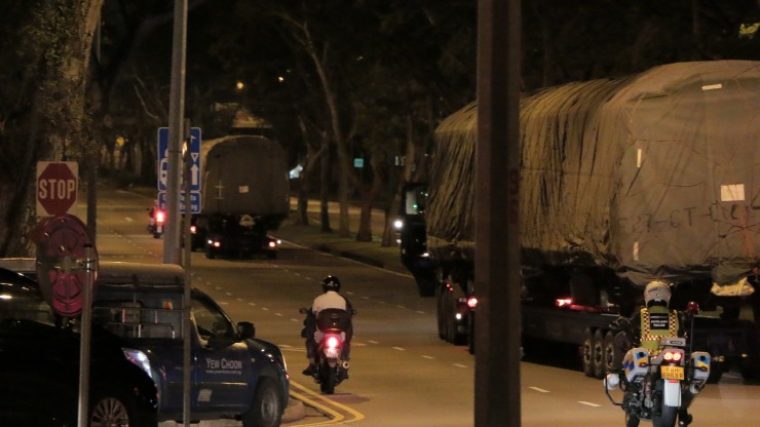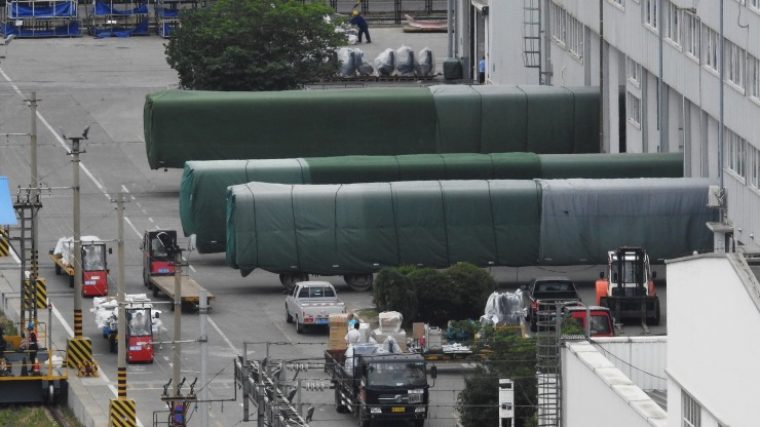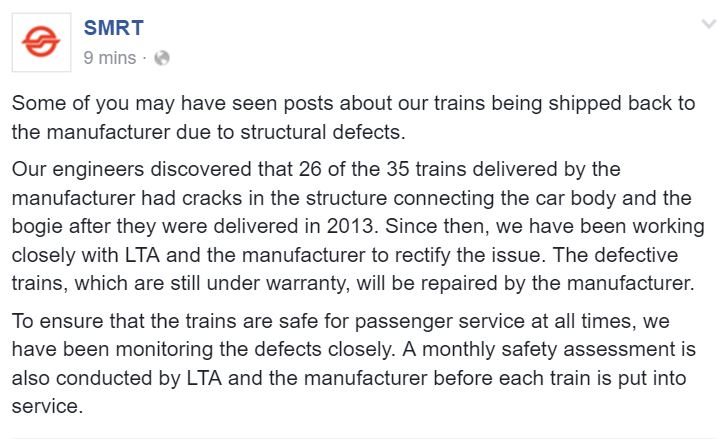Hong Kong news site Factwire recently released a piece about how train carriages were being wholesale transported back to Qingdao, where they were manufactured.
The paper claims that the shipping took place on June 12.
What happened before June 12:
Factwire claimed that the Singaporean C151A fourth-generation MRT trains were of poor quality, with glass next to passenger seats shattering, and a power supply battery exploding during repair.
The piece stated that Kawasaki Heavy Industrial-CSR Sifang had been providing 'after sale service' for the current batch of trains, even sending over staff to fix any issues the trains might have had.
What happened on June 12:
 Photo: Factwire
Photo: Factwire
Here is what Factwire claims happened on June 12, 1 am.
1. 2 covered train cars were towed away and transported by cargo trucks.
2. Around 3am, the 2 train cars arrived at Jurong Port.
3. 6 other train cars were already in a corner of the port, as evidenced by Factwire's drone footage.
4. They were shipped off on the same day.
5. They arrived in Qingdao on June 25.
 MRT trains Factwire claims are in Qingdao. Photo from Factwire
MRT trains Factwire claims are in Qingdao. Photo from Factwire
Here is why they claim SMRT transported the train carriages back:
In December 2011, serious malfunctions occurred on the SMRT’s North South Line, which the SMRT suspected were caused by C151A fourth-generation trains. Later investigations by the then Committee of Inquiry, revealed that the C151A trains were not the cause of the breakdowns in December 2011.
Factwire's source in China's rail manufacturing industry claimed that quality issues with the C151A worsened in 2013.
Glass panels and windows near passenger seating areas would shatter, which were consistent with reports in 2014 and 2015.
The life span of the train was also significantly shorter than previous versions of the train, according to an ex-employee of SMRT in Factwire's report:
“It’s not a complete failure you know, it’s [that] the [train’s] life is so much shorter, maybe about half [of the normal lifespan]. [For instance], if normal trains can [run for] one million km, but this one can only do 500,000km.”
Perhaps most importantly, cracks were also found in structural components.
Why were the cracks so dangerous?
Factwire claims that cracks were found in the bolster function parts connecting the car body to the bogie, the rail undercarriage.
According to the same source:
"The bolster function balances the train’s weight and swing range, [therefore] cracks are dynamic, [they] can spread to the train car body with the bolster function, so the entire train car must be replaced.”
So basically, sounds like a hefty replacement bill.
What does this mean?
If the report is true, the repairs could take up to 4 months. The report also claimed that the original car bodies - which would cost an average of $2.7 million per carriage - would have to be discarded.
 MRT trains Factwire claims are in Qingdao. Photo from Factwire
MRT trains Factwire claims are in Qingdao. Photo from Factwire
The Straits Times reported that the trains are still under warranty, and defects would be rectified by the manufacturer.
SMRT's statement
SMRT has sought to address the issue promptly with the following Facebook posting:

Questions for SMRT
Mothership.sg reached out to SMRT with the following questions, and will update the article if they can provide some clarifications.
1. Can SMRT comment on the claims put forth by the SMRT personnel quoted in the article saying that "C151A train model had quality issues in its propulsion system, engine system, and other components" and that trains had a shorter lifespan?
2. Are recent disruptions in MRT services related to these alleged cracks in structural components and bolster function parts?
All screenshots from Factwire news' Facebook
If you like what you read, follow us on Facebook and Twitter to get the latest updates.
If you like what you read, follow us on Facebook, Instagram, Twitter and Telegram to get the latest updates.
